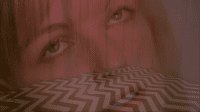Throughout their review of Twin Peaks’ original run, Twin Peaks: Fire Walk with Me, Season 3, and their podcast’s subsequent branching, the Diane team has led us on a fast-paced, research-based look through the trees using their keen senses, an anthropological lens and Part 8’s “Uterus Trumpet.” If you’re like me, closely observing the eclectic Twin Peaks family that Diane has become is not just fun, it also rewards the dear listeners for paying strict attention at all times.
In this jumbo summer blast edition of the Living Novel, my aim is to give you a peek behind the scenes, and learn a little more about three-fourths of the Diane team, first covered by Rob King in his Pod People feature. Due to scheduling, Mark was unable to participate, and I hope to get the opportunity to sit down with him in the future (or past).
The podcast team’s first experiences with Twin Peaks; through a critical lens, or a “let-it-wash-over-you” with few expectations:
Rosie: “My parents watched Twin Peaks as it aired; I would have been around 6 or 7 years old. They would talk about this funny, weird show and we could watch episodes they’d recorded as long as they didn’t have BOB in them. A sound strategy in some ways, but of course it meant that BOB became the most terrifying thing possible in my mind before I’d even seen him, which I did because I accidentally put the wrong tape on one day. The bit I saw was BOB laughing maniacally in the Black Lodge, in the last scenes of episode 29. I switched it off immediately. It was very frightening.

Bobsy: “There is a weekly TV listings magazine produced by the BBC called Radio Times. It’s less important and influential than it used to be of course, but still there.
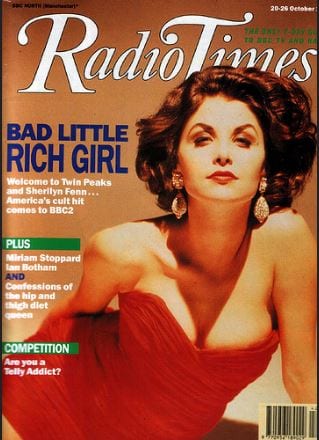
Issue no. 3488, which covered the week of October 23, 1990 (when Twin Peaks debuted in the UK) featured a large double-page spread. [It contained] a diagram map with little thumbnails of all the characters; a web of lines and arrows detailing their interconnections and relationships to each other, and to Laura, and to Dale. There was a key detailing the types of relations between the characters – ‘does business with,’ ‘family of,’ ‘is having an affair with,’ etc . A disturbing number of arrows with the “is having an affair with” label pointed towards the large picture of Laura, wrapped in plastic in the centre of the spread. It was a noble attempt by the editors to make BBC2’s expensive new US import less opaque to the new viewer, something spoiler outrage would preclude these days. Perhaps it even worked, for a while anyway.
My oldest sister is on the sofa. I don’t know who else is on the room, but I know I am there with her. She’s just turned 16, and is cradling the pages in her lap and declaring to us who is who and what they do, and how they know each other, whenever someone new appears on-screen. And how they relate to Laura, for good or ill.
To a degree then, Twin Peaks was always already-annotated, pre-mediated, at the point of arrival. Strangely, this at no point made the experience less potent. I know myself too well to truly trust my memories, but I am sure the torchlight on the ground, the gloved hand digging up the rock and the golden half-heart underneath – I am sure that stayed with me as I walked downstairs to bed.”
Adam: “Like Donna, I guess I better get a little confessional. Here goes: I was 17 and it was 1993, a notable year because I was suffering from clinical depression. Panic attacks were a feature of daily life, often brought on by watching films or television. Their heightened emotion and sensory impact overwhelmed me to the point where I’d spend minutes in a state of terror, frantically attempting mindfulness techniques in an effort to calm down.
So yeah, I probably shouldn’t have gone to see Fire Walk With Me at the cinema. I’d caught glimpses of Twin Peaks before, including the final minutes of the Season 2 finale a couple of months previously, but on the whole I’d avoided it. Like many people who eventually become Lynch fans, his movies intimidated me. In fact, intimidate probably isn’t a strong enough word. It felt as if they – and I appreciate this sounds hyperbolic – revealed a nightmare under the skin of the world. When you’re depressed, you don’t need to see trauma demons clamber over the sofa, you know?
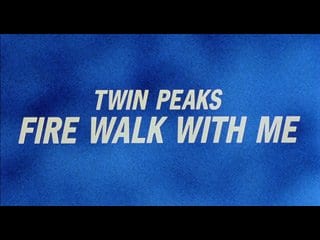
I saw the film when visiting a friend in London. He wasn’t a Lynch fan or well-disposed towards art cinema – it was just something to do on a miserable February afternoon. God knows why I agreed. The idea of two hours trapped inside Lynch’s brain was almost unbearable, but I was a teenager and teenagers have a horrible habit of ceding to their friends’ wishes. Luckily my mate claimed boredom about a third of the way through (It’s quite possible he was freaking the fuck out), just as the Convenience Store arrived on screen, and we left. I don’t think I’ve been more frightened by a movie in my life. It’s funny, looking back I realise I wasn’t really watching it. My experience was entirely impressionistic, no depth: all confusion and fear and perplexity that I couldn’t analyse away or penetrate.
That’s a pretty common reaction to Lynch, right? It’s even incorporated into academic critiques, where it’s discussed within the context of a “cinema of attractions.” Moments in film that aren’t driven by plot or character, but by texture, emotion, aesthetic or visceral power, that kind of thing. All sensation. You see it lurking in conversations between fans too, when we talk about there being no one correct interpretation. We cleave to that view because the work is deliberately open to various readings, but it also points to the limits of interpretation, which in turn stresses the importance of the experience as _pure experience_. All of which is a TL;DR way of saying that many of us, myself very much included, come to love Lynch’s work because we want to resolve those strong emotions, but maybe stay because we, like Lynch, find pleasure in the lack of resolution. The mystery.”
How did each of you watch the original series’ run?
Rosie: “Some years after the first contact experience I was reminded of the show when a teacher played the theme tune during a dance class, and I was determined to watch it properly. I got the VHS tapes for my 13th birthday (this would have been 1997) and watched the whole series on my own in my bedroom over the course of a few days. That was a formative experience.
Bobsy: “We stopped using the handy cut-out-and-keep guide after the first or second week, but that was me every Tuesday night until Twin Peaks was finished. There were a couple of short breaks in the weekly schedule, for Christmas and whatnot, and one week I missed an episode while on a school trip to France, but it took us right through until the following June, not long after my 13th birthday.
My sisters and I (sometimes mum and dad, too) stuck with it, pretty religiously. We shared the shock of Maddy’s death; the confusion, the sense of triumph and our own implication in the show when out of nowhere our little town got a namedrop in the finale; and then an hour or so later, the shared shock and dismay resonating through the living room and on my mother’s face as Cooper smashed into the mirror. I remember looking to her for an answer but she had nothing, of course.”
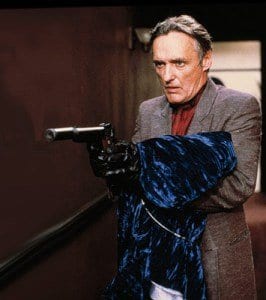
Adam: “It was a few more years before I saw the show proper. Maybe ‘98 or ’99 when I was living in shared accommodation with five burgeoning Lynch fans. In the intervening years I’d recovered from mental illness and even written about Blue Velvet for my A-levels. If Fire Walk With Me was my gateway drug, Blue Velvet was the film that opened up Lynch for me. It was so much more accessible, less ferocious in its intent. It’s tough to remember with any degree of accuracy, but my sense is that I was absolutely fascinated by Lynch at that time, while still approaching his films with a great deal of caution. The raw aesthetic was mesmerising: the moods and lighting, the sound design, the mannered acting, the vivid art direction. The darkness.
If there’s one impression I still have of his work it’s the deep, deep blacks that yawn open. Memory is strange, eh? In my mind that onscreen darkness merges with the nocturnal habits of my household. We spent hundreds of hours watching films by candlelight under a fug of dope smoke. That living room is where I saw Lost Highway, Eraserhead and Wild at Heart for the first time.
I can’t remember precisely how Twin Peaks happened. One of our London-based mates might have brought a tape down, or maybe one of us already had a copy of the Pilot. What I do know is that the others started watching the show on VHS before me and went bloody nuts. Viewing sessions were enhanced by coffee and doughnuts, pie was consumed, theories discussed. It took me maybe a month to overcome my anxiety and sit down with it. You can only maintain the lie that you “just don’t think Twin Peaks is very good” for so long in the face of an onslaught of enthusiasm. At that time everyone in our circle seemed to become a Twin Peaks fan, which looking back was a blessing. I didn’t have to rely on bulletin boards or seek out likeminded people. If I wanted to talk about Twin Peaks all I needed to do was walk into my kitchen, where there was a good chance that Badalamenti’s soundtrack would be playing on the stereo.
We talk about magic a lot on the podcast. For me the principle magic of the first two seasons is place, that sensation of being drawn ever deeper into the woods. From the Pilot onwards, it wasn’t so much that I wanted to find out what happened next, more that I wanted to go back to Twin Peaks, to abide there, at a table in the RR, in a secret alcove in the Great Northern, in a store cupboard in Horne’s Department Store, in the shadows of the forest. In part that’s due to the way that Twin Peaks ties place to mystery. How it does that is complicated and not something I couldn’t have articulated back then, but I instinctively recognised it, as I’m sure we all do.
I went back again and again to relive the [original series’] final episode’s power. Early on I understood that those scant 45 minutes, perplexing as they were, were the sharp edge of what the show had to say about human experience, possibly about something you might call spirit. It would take me a long time for my thoughts to crystallise, as much as they’ll ever crystallise, but it began there, with the suggestion that the self isn’t some perfectly integrated diamond, but fractured and uncertain, haunted by repetition and circularity. People love to slag off soap opera as the site of Twin Peaks’ greatest triviality, but soap is a form built from those sorts of echoes. In that sense it’s a better description of life than conventional Hollywood narrative, which sees characters embark on journeys of grand transformation, never to look back. In [Episode 29], as in Twin Peaks as a whole, Dale does nothing but look over his shoulder, and Laura is always there to catch his eye.”
2017 brought us all back together for Season 3. What were your viewing experiences like this time around?
Rosie: “I watched Season 3 streaming with my boyfriend Dave. My experience of the viewing of Twin Peaks was shaped by the demands of the podcast. Last summer was a bit of a trial of endurance which, if you consider my 20-year obsession with Twin Peaks, probably served me right in some karmic sense.
So, I would watch the episode for the first time after work on a Monday night, watch it again an hour later taking notes, go to bed, go to work, get home on Tuesday and record Diane, Dave and I would do the edit and sound immediately, and it was published that night. I was avoiding social media during the period that Twin Peaks aired because I wanted to keep my own response intact as much as possible, and there wasn’t much time for it anyway.
It was grueling. If there was a fourth season I wouldn’t do it that way again, but I felt like it had done me good once it was over!”

Bobsy: “The live showings over here were at like 1 or 2 in the morning, late on Sunday night, and I wasn’t into that. It was the Monday evening at 9 or so, after the kid was in bed and me and the Mrs. had sufficiently prepared ourselves, when we would turn the lights off and settle down.
It was unbelievable: that is, every week, it was difficult to believe there was Twin Peaks there. Monday daytime was a ball ache dodging spoilers, and then we would convene to record Diane on Tuesday night. We wouldn’t talk much on the day before recording so as not to influence each other, and maybe spend some time in that period re-watching, or researching, considering our impressions and making notes.”
Adam: “Season 3 was seen under non-ideal conditions. We had to cram in at least two viewings, sometimes more, before recording Diane on Tuesday evenings. This meant my first exposure to a new episode usually happened in broad daylight on the Monday morning (staying up until 1am on Sunday night simply wasn’t an option). As we all know Twin Peaks is better experienced in the dark.
While social media helped to immerse us in the season and connect us with friends and listeners, something I never tire of, it was also work. We had Diane to promote, hashtags to monitor and spoilers to dodge. It’s odd: I remember that time very fondly, but with distance I realise that it was quite stressful. There were so many ideas flying around the ether, such a fast turnaround on the podcast, it made it hard to sit down and formulate my own thoughts. Luckily, I was freelancing and didn’t, for the most part, work on Monday, so there was always a few hours when I could bask in the feelings and impressions that each episode left me with. Recording was a pleasure too.
We podcast together because we’re genuinely interested in what each of us brings to the table. These are people who I love and who I’ve discussed Twin Peaks with for years. We might not agree on everything, but we’re on the same wavelength, you know? That group dynamic has its own creative energy. It is, to use Lynch’s term, a truly wonderful thing. I’m so glad that our listeners get something out of it.

One of the greatest joys is when laughter on the show works for people in the audience. Uterus trumpets, sexy velociraptors and hot Dougie love aren’t the stuff of great theories, but they are what being a fan is all about. Small joys that bring us together with our listeners in a way that talk about trauma and “late style” will never do. I guess it’s those moments of connection – when someone on Twitter laughs or builds on a joke – that matter the most. When we feel that our listeners are right there with us. You can’t beat that.”
Do you have any interest in the Twin Peaks-related literature or merchandise, official or unofficial?
Rosie: “The Secret Diary of Laura Palmer by Jennifer Lynch is my favourite of the accompanying materials. I read that first when I was probably about 15 and over and over since. It’s a remarkable piece of writing in its own right, fusing coming-of-age drama with supernatural horror in this seemingly effortless way, like a Judy Blume novel that’s come under demonic possession! It’s a gift of a book.”
Bobsy: “My other sister worked in a bookshop in town and got hold of the Laura and Cooper paperbacks as they came out. Absurd as it seems now, the Laura book fit with the diary-based, fictionalised guides to adolescence that were popular at the time: The Secret Diary of Adrian Mole aged 13 ¾, Diary of a Teenage Health Freak, The Secret Diary of Laura Palmer. I read them all, but one of these books is not like the others. Rereading Laura’s diary recently was a shocking experience, like an intrusion; like breaking a promise.”
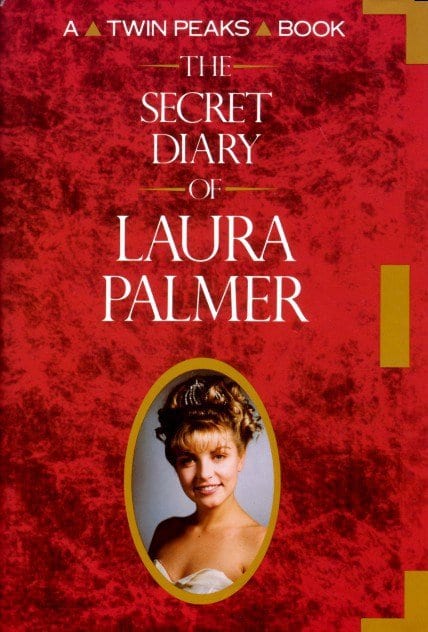
Adam: “Where Twin Peaks intersects most powerfully with my life is through the world of ideas associated with it. As I said when we were interviewed as a group for 25 Years Later, I’ve read just about every book there is to read on the subject of Twin Peaks and Lynch’s work more generally, and I supplement that stuff with articles and academic essays on non-Lynch related matters. Twin Peaks also lives and breathes in my taste more generally, which skews towards heavily aesthetic, weird and atmospheric works. I love Marvel films as much as the next geek, I grew up on that stuff – I’m happy to go to bat for it – but, at risk of sounding like a snob, there’s another part of me that adores magical realism, new wave sci-fi, non-linear and impressionistic narrative and abstract expressionism (okay, to be fair, you’ll find some of that in superhero comics if you know where to look). David Lynch and Mark Frost helped to point me in that direction. I’m sure many others feel the same way.
Twin Peaks also contributed towards my interest in Hauntology, a musical genre and a way of reading art and culture that’s been huge for me in recent years. Without wishing to get into a lengthy explanation, it examines how the present and our conceptions of the future are always haunted by the past, and explores the way that excluded things exert a weird kind of influence. In Twin Peaks, the paradigm case of haunting is Laura Palmer, always absent, yet in some strange way always present, just out of reach behind the curtain. That sense of being haunted, of time being transparent, even broken is a key part of our experience as we get older. At least it has been for me. We become aware of the cycles that underpin our lives, see ourselves in our children and our parents in us and start to question what constitutes our own identity, who we are in face the death, that kind of jazz. It all gets very Season 3 basically, which is why [Season 3] made such a powerful impression. There’s been a lot of talk about how Frost and Lynch made TV as high art that I struggle to get behind because it feels like people trying to gate-keep culture – this is the sort of thing you *should* like, and if you don’t you’re a philistine, etc. That said, I appreciate the new season in precisely that way. It seems to be talking to the soul.
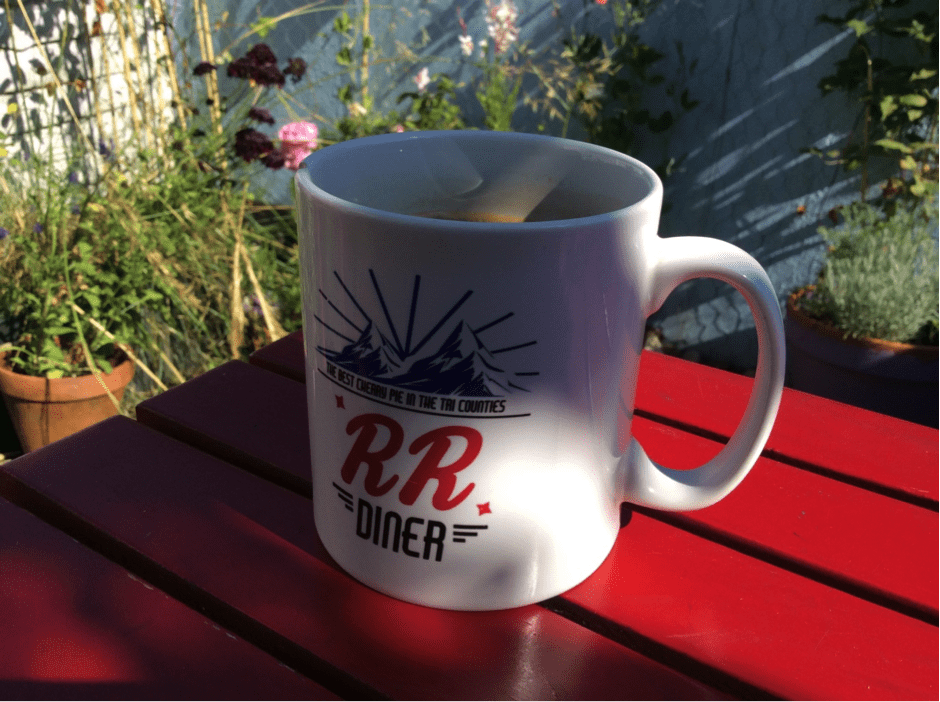
I should add that I have a smidgen of merch. My dog has a red room collar, bought from the garden centre up the road of all places, and I drink from a RR coffee cup every morning, an act that’s almost ritualistic. I’m not superstitious, but I’m pretty sure that bad things would follow if I were to use my Star Wars mug.
As for music, I own all of it. It’s tough to pin down a favourite track so I’ll offer up two, “Dark Mood Woods,” which hits my icy synth sweet spot, and “Dark Space Low,” the tune that closed out The Return. It’s just impossibly moody and sad. Interesting that both tracks were prominent in the finales. Never thought about that before.”
Have any of you ever converted a follower to the Church of Peaks?
Rosie: “Haha, yes! I was an extremely active evangelist for Twin Peaks from the moment I finished the final episode. I gave multiple presentations at school, I hassled all of my friends constantly, and I had viewing parties. A few people ended up fans of the show and I’m sure I put some off as well. Obviously, I needed to talk to people about Twin Peaks, and I calmed down once we started doing Diane.
The most important person I introduced to the show was Dave who’s been with me since we were teenagers. I remember when we had been seeing each other for a couple of months and my older brother Mark (one of my Diane co-hosts) was meeting him for the first time. Literally, the first sentence out of Mark’s mouth as he reached out to shake Dave’s hand was “Hello, have you watched Twin Peaks yet?” By that time Dave had watched it twice.”
Bobsy: “Don’t think so! I am very lucky, I only know cool people: They all like Twin Peaks already.”
Adam: “Before my wife and I were a couple, she moved into a flat I was sharing with a friend. I converted both of them! Wasn’t too tricky. The friend was part of my Twin Peaks-loving social group, so she was expecting to like it. My wife had just finished her fine arts post-grad and had long been a Lynch fan. If I recall correctly, she was the first person to point out to me how painterly his camera work is. It was a delight watching them throw themselves in from the opening shot. Felt almost like seeing it for the first time.”
What is your favorite scene (or character) from any part of Twin Peaks and why?
Rosie: “The sequence that immediately springs to mind is the scene between Windom Earle and Annie when he has kidnapped her and drags her into through Glastonbury Grove into the Lodge. I love the black magicians of Twin Peaks: Windom Earle in the original series and Mr. C. in Season 3. There’s something thrilling about their hubris. They are evil of course, but the sheer mythic scale of their ambition has to be applauded.
Annie’s blankness in this sequence is perfect as well; her prayer as she’s being walked through the darkness of the woods. The way she just goes stunned and wide-eyed when they get to the circle of trees, like a rabbit, like she’s become an offering or vessel in this terrible magical happening. It’s situated in this absolutely golden final episode [of Season 2] and it feels like the black magical heart of the whole town. The work that began with the death of Laura Palmer has reached a ritual climax and Twin Peaks has gone mad. It’s frightening how out of control it all feels but you also kind of want to be there, the magic the woods has is just blowing through the whole town.”
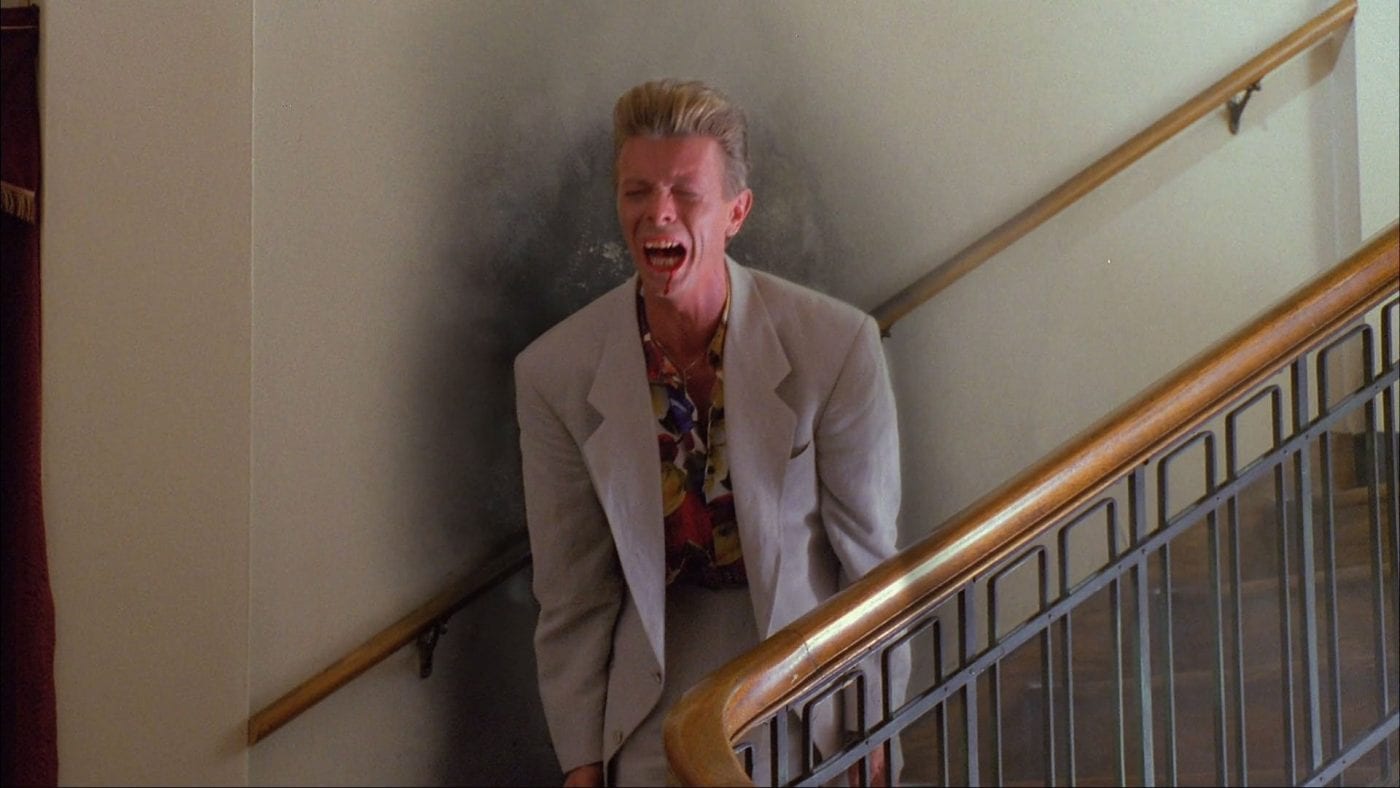
Bobsy: “Phillip Jeffries. The forms we see are so perfectly realised for their brief moments in the spotlight, but the gaps between, we can only guess, so large and so full of significance and event. Quite a journey.”
Adam: “My cheaty answer would be the sequence leading up to and after Maddy’s death, which is just everything. Twin Peaks distilled. When people talk about how Lynch’s work conflates subtext and text, rolling them into one, they’re talking about moments like this. Leland is Bob, Maddy is Laura; reality sparks with electricity as past collapses into present to the tune of “The World Spins.” Lynch doesn’t merely provide us with a reconfigured version of the tragedy at the heart of the show, we’re made to live the terror and pain and heartbreak. When the Fireman appears on the stage, sadly repeating “It is happening again,” we understand that this isn’t simply spectacle, it’s pure emotion. If there’s a more powerful scene in TV or cinema, I’ve yet to see it. Just thinking about it gives me goosebumps.
The individual scene that I’d nominate is Frost at his incredible best, in that it’s his dialogue that makes it sing: Major Briggs describing his dream to Bobby in the RR. Rosie described it in religious terms when we covered it on the podcast, as a vision of heaven – it’s hard to disagree. A heaven where a father and son find not just the connection they’ve been lacking but contentment. As a parent, that scene’s just gotten more powerful as the years go by.
My favourite character has to be Dale. Boring I know, but other than Laura or Audrey is there another viable answer? Albert has a bit of a following on Tumblr, lots of emphasis on his ties and sharp suits, which is cool and all… Laura and Dale aren’t just interesting presences on screen. Season 3 deconstructs Cooper and positions Laura as a key part of the mythology, so our interest can now expand beyond how pleasant or otherwise it is to spend time with them. Not that that kind of enquiry is everyone’s cup to tea, but for me it’s definitely an added bonus. To go back to my thing about Twin Peaks and the human condition, I keep thinking about how Season 3 Dale articulates the concept of angst, the feeling of hopelessness we feel when confronted with life’s myriad choices with no road map (co-ordinates) to guide us. He kinda reminds me of Don Draper the protagonist in Mad Men, who continually grapples with that stuff but without all the cosmic doodadeery. Mad Men’s surprisingly Lynchian by turns. Everyone should watch Mad Men.”
Please talk about creating the whole Diane experience: I’m intrigued with how you’ve all blended your interests around and through the Twin Peaks and David Lynch worlds. I also like it when you steer toward other projects (Sunset Boulevard!), so please talk a bit about those side projects, too!
Rosie: “I went into social anthropology and the study of religion within it because I wanted to conduct spiritual investigations, and I was explicitly thinking of the Twin Peaks version of the FBI when I went down this path. It turned out the discipline had a lot to offer outside of my weird reason for choosing it when I was 18 but that was the weird reason. So my academic interests were strongly informed by Twin Peaks, which then fed back and provided an angle for my work on Diane. When I’m watching Twin Peaks for Diane, I’m thinking about folklore, religion, specific cultural customs – those kinds of things.
It’s really helpful to have a clear sense of my own sphere of interest as I’m covering the show; it helps me come up with things to talk about but also highlights the fact that my perspective is limited and partial. Hopefully this means that show is a bit more inclusive and welcoming than it would be if we were trying to present Diane as a comprehensive overview of Twin Peaks.
The brilliant thing, having done this work, is that I find I have a way of engaging with a wider range of stories. I’m currently working on a series of audio essays about key themes in storytelling called The Moral of the Story, and I also work with Bob from Diane on our own monster-hunting spectacular The Shadow Trap. In both of these films and books and TV shows and games are used as an entry point to wider stories that circulate in our culture; about where you find monsters for instance, or how you do a deal with the devil, or the unearthly power of glamour.
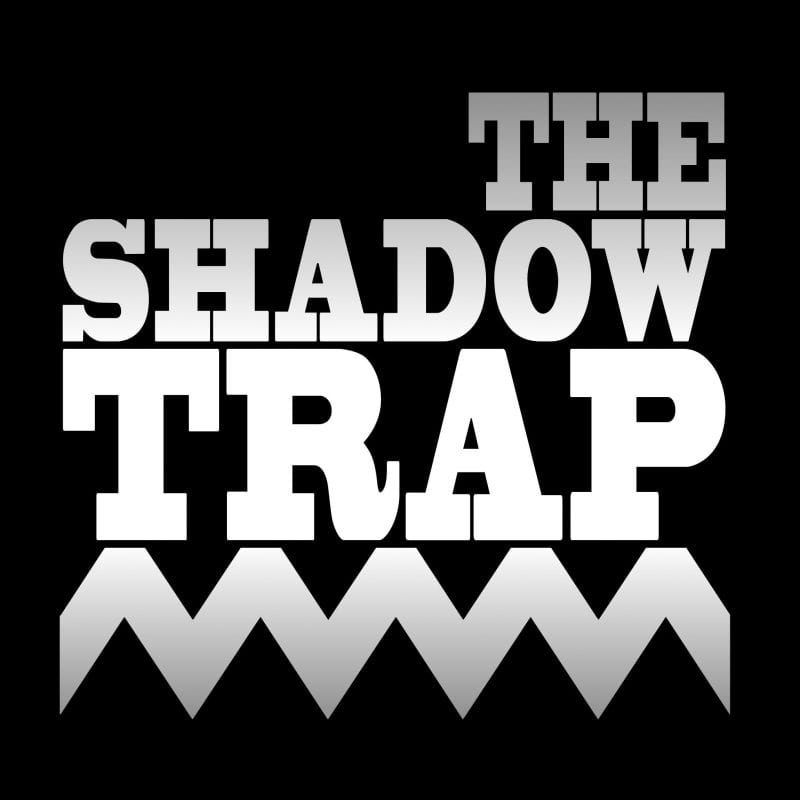
All stories are folklore when you come at them from this direction, and I like to do this because it gets us away from viewing them as the output of isolated creative genius and towards a perspective where you can take in a whole sea of hands shaping their ongoing creation and reception.
This is particularly important with Twin Peaks, I think. There is a tendency to treat the show as the unfathomable creation of David Lynch and (where people remember to include him) Mark Frost. But Twin Peaks is packed with humanity coming from all angles – all the different creators and the stories they love, all the cast and their embodiment of the characters they play, the props, the costumes, the landscape. You have all of this and more and then you also have the fact that people have been responding for twenty five years in art or theories or even interview series like this one – whatever they’ve dreamed up. All of this is how Twin Peaks exists in the world. It’s so human and so full of beauty.”
Bobsy: “It got really good after a few episodes, when we realised we shouldn’t drink while we were doing it. Finding the right mood, the right headspace, has been the key difference in getting a good podcast episode that flows and says everything it needs to – and the ones you have to battle through and afterwards you notice you forgot to talk about the most interesting stuff anyway!
Having Adam and Rosie’s different-but-complementary modes of thought to rely on is what makes Diane what it is. Mark and I can float in and out with our own takes – and thank God for Mark being there, to be hilarious and serious and spot the joyful absurdities no-one else notices – but the mainstays’ rigorous yet inspired perspectives mean you can always go in and sit down with confidence there’s going to be a conversation well worth having. And of course in the background there is always Dave, the true hero of Diane, making sure at the end of it all none of us sound too stupid.
At some point me and Rosie started tracking down fiction’s most exciting monsters for our spinoff show The Shadow Trap. Both of us are more likely to answer ‘yes’ than normal people to questions like ‘Do you believe in the Loch Ness monster?’, and we are sort-of-serious about establishing a methodology which you can use to classify and defend against those more dangerous aberrations of nature and culture, wherever we might find them. We have a good time and the info you get there could save your life out in the woods one day, so listen in.”
Adam: “God, it’s so hard to remember how it started. It’ll be interesting to see what the others have to say in their interviews. What I know for sure is that Rosie and I discussed it long before we ever fired up a mic. There were almost certainly similar if peripheral conversations with Mark and Bob too. In case readers don’t know, Rosie is my half-sister, Mark is my twin brother and Bob is a dear friend of longstanding. All of them are huge fans of Twin Peaks and exactly the crew I fantasised about podcasting with when the idea popped up. Somehow I knew that we’d be able to find a unique voice working together: Rosie with her anthropological and religious expertise, Mark with his poetic insight, Bob with his incredible wit and Fortean interests, me with, well, whatever it is I bring.
I recall our pal Fraser of the Silence! comics podcast telling us to “get on with it!” so that probably helped move us along. Then there was the name, which started out as Garmonbozia but morphed into Diane the second it was suggested. Back then Diane was one of Twin Peaks’ weird absences, so we liked how it evoked mystery but also warmth, the whole recording thing. It also had a strong feminine energy – one of the principle vibes of the first two seasons. In the world of podcasting people worry a lot about whether or not their name will help with search engine optimisation, but we decided – or at least I did in my head – that the magic of the name was more important than marketing concerns. Better to have a name that inspires us than suits Google. Besides, the “Twin Peaks Podcast” was taken.
Everything from there is literally recorded history (thanks to our occulted fourth team member, Rosie’s partner Dave). We covered Season’s 1, 2 and 3, dipped into Lynch’s other work, some of the texts that inspired Twin Peaks, and have settled into a thematically driven quarterly format, with each episode being a bumper edition. Our next show will address the question “Who killed Laura Palmer?” from a post-Season 3 perspective. The one after will ask “Who is Dale Cooper?”
In terms of other projects, first and foremost there’s The Shadow Trap , Rosie and Bob’s show about monsters. As it’s not my thing I don’t feel gauche when I say that they’re doing fantastic work, as good as anything we’ve done on the core podcast. If there’s a successor to Diane, The Shadow Trap is it, so if you want that regular hit of Rosie and Bob goodness it’s right there waiting. As for me, I’m busy creating a podcast for our Patreon channel on Benjamin Mackey’s Twin Peaks tarot deck, “The Magician Longs to See.” The idea is to learn tarot and use the deck to explore questions about Twin Peaks. I’m hoping that listeners new to tarot will learn along with me and that everyone will find inspiration from my meditations on the cards, which are intended to open up novel and surprising ways of thinking about the show. That’s about it for now.”
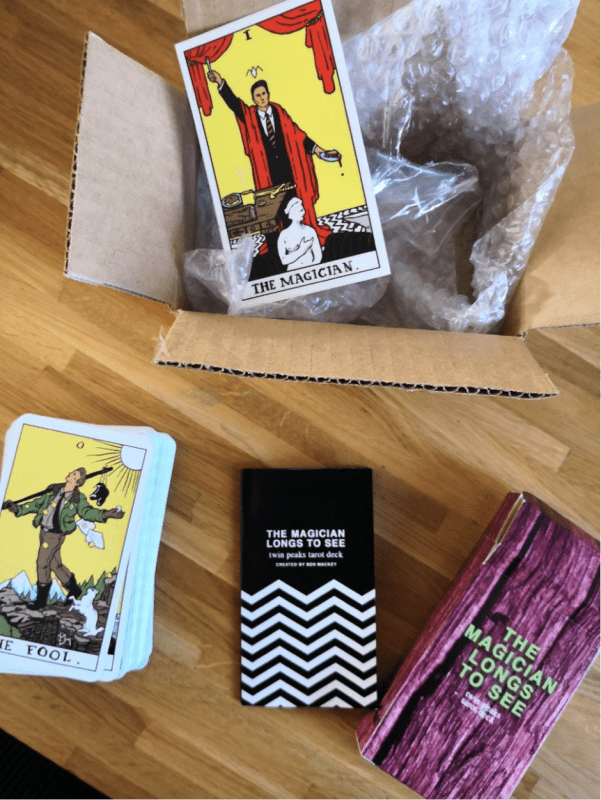
Before I go, I want to take a moment to thank our gorgeous listeners without whom none of this would have been possible. Creating a podcast isn’t always easy – as Jerry will attest, exploring the woods can be hard work from both a practical and emotional perspective. It’s their kind words, friendship and humour that has kept us inspired and motivated. Thank you, thank you, thank you! And thank you, Pete, for giving us the chance to share our stories.”
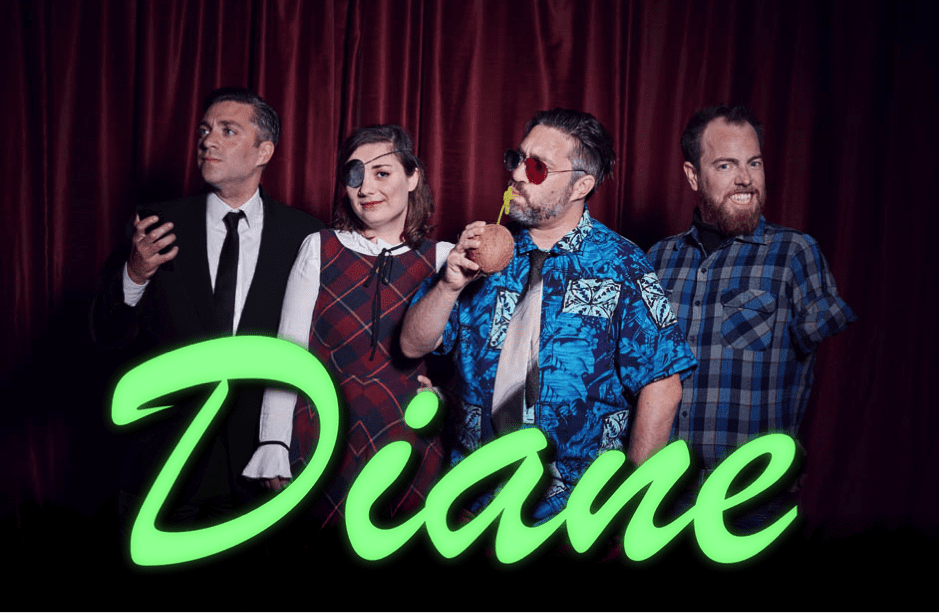
Adam, Rosie, Mark, and Rob (Bobsy)
Rosie is a producer and regular host of Diane, a podcast about Twin Peaks. She has a PhD in social anthropology and lives in Brighton with her boyfriend Dave and a black cat. You can find her in Twitter:@Notnowrosie
Bobsy is a writer and podcast guy from Brighton by way of Glastonbury. He wears a lot of black because it’s those kind of times. Find him in a good mood on twitter @bobsymindless and @ShadowTrapHQ.
Adam lives with his family by the seaside in Brighton, UK. He does copywritey stuff, podcasty stuff and thinks way too much about Dick Tremayne for a guy in his 40s with non-men’s fashions related responsibilities. Email him at dianepodcast@gmail.com.
Twin_Petes is a 27 year-plus fan of the show, music, merchandise, and emotions that emanate from the woods surrounding Blue Pine and Whitetail Mountains. He and his family now reside in what can best be described as the Purple World. His favorite response to most questions is: “That…cannot be revealed.” He loves all things Lynch and Frost. You can find him on Twitter and Instagram @Twin_Petes.

